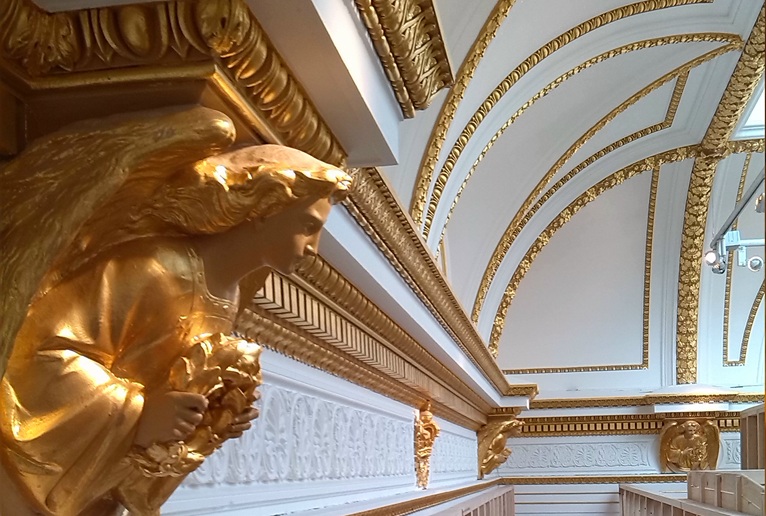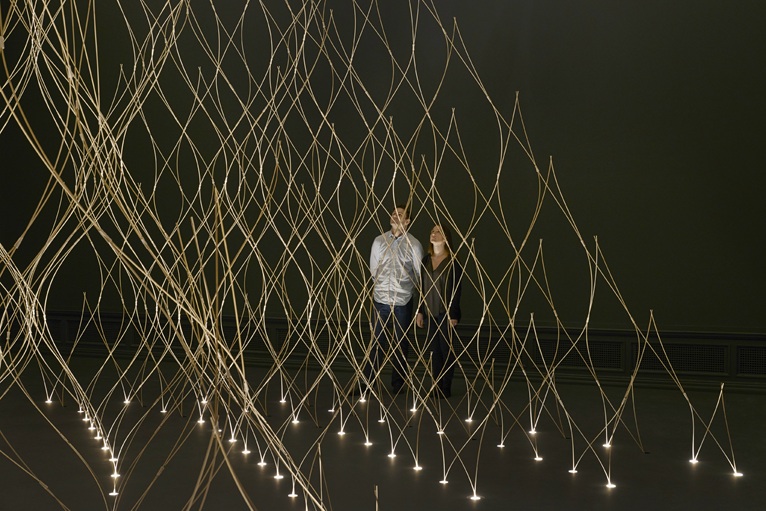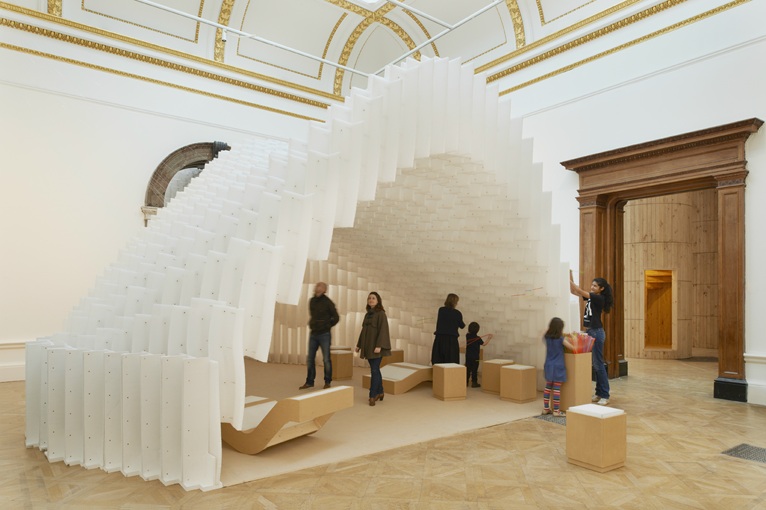
EXHIBITION _ We are used to approaching architecture in a complex context, so many elements are worked on: context, users, climate, council law.
But what could happen if you take off all off those and concentrate your attention exclusively in a piece which holds the soul and the essence of a building? That is the feeling that you have visiting Sensing Spaces: Architecture Reimagined, a poetic and intriguing exhibition on show at the Royal Academy of Arts in London curated by Kate Goodwin. Seven architects have been selected to reflect and explore, through an installation, the essential elements of the architecture.

You don't have to try to decode the complexity of the building or its connection with the surroundings, but just experiment the perception on the space. In fact you will not explore just the installation in its self but you have the opportunity to look from a different point of view the Academy’s Grade II* listed galleries.
Different point of view
The massive structure by the Chilean-Argentine studio PEZO VON ELLRICHSHAUSEN catches your eye immediately, but it’s only later that you realize that is getting into one of the three big columns and having climbed one of the narrow spiral staircase that you understand that the installation is just the means to observe the stunning details of the gallery from the platform on the top.
Creativeness and sharing
Our concept of architecture is something reserved to architects and insiders. But it is definitely not like this in many parts of the world, as reminds us Diébédo Francis Kéré, who works between Germany and Burkina Faso in Africa.
“To move forward, people need to be inspired: they need buildings that enhance their creativity and push them to take their future into their own hands.”
Engaging the visitors to add their personal contribution to the structure, the architect has left the structure incomplete giving people the opportunity, through long colored straws, to shape the tunnels hanging their creations.
Relax and peace
Smell is the sense that prevails when walking around the spaces set up by Kengo Kuma and Li Xiaodong .
The former designed two delicate and fragile structures where the smell of hinoki, a kind of Japanese cedar, fill up the whole rooms. The installation is born from the childhood's memories of the architect exploring the traditional architecture of his Country.
Li Xiaodong taking inspiration from Chinese tradition has designed a pathway with bright floor and walls composed of branches. This sort of labyrinth ended in a room with a mirror wall which doubled the space of the garden and the sound produced walking on the pebbles on the floor increase the natural atmosphere of the place.
Light
As always in their architectures, Yvonne Farrell and Shelley McNamara, of Irish firm Grafton Architects, playing wisely with the light. They regulate, through different composition of volumes and elements hanging on the roof, the power of natural light into a space.
One of the most powerful rooms where the relationship between architecture and natural element become pure poetry.
Materiality
Eduardo Souto de Moura's subtle arches and Álvaro Siza Vieira's courtyard installation encourage visitors to consider the architectural history of Burlington House, analyzing two classic elements of traditional architecture: arch and column. They have interpreted these with different materials and extrapolating them from the ordinary position and function.
Royal Academy of Arts until 6th April 2014
Burlington House, Piccadilly
London W1J 0BD

Photo © Royal Academy of Arts, London, 2014. Photography: James Harris. / © Grafton Architects; Cover: Photo © Royal Academy of Arts, London, 2014. Photography: James Harris. / © Pezo von Ellrichshausen

Photo © Royal Academy of Arts, London, 2014. Photography: James Harris. / © Kengo Kuma.& Associates

Photo © Royal Academy of Arts, London, 2014. Photography: James Harris / © Kéré Architecture









comment